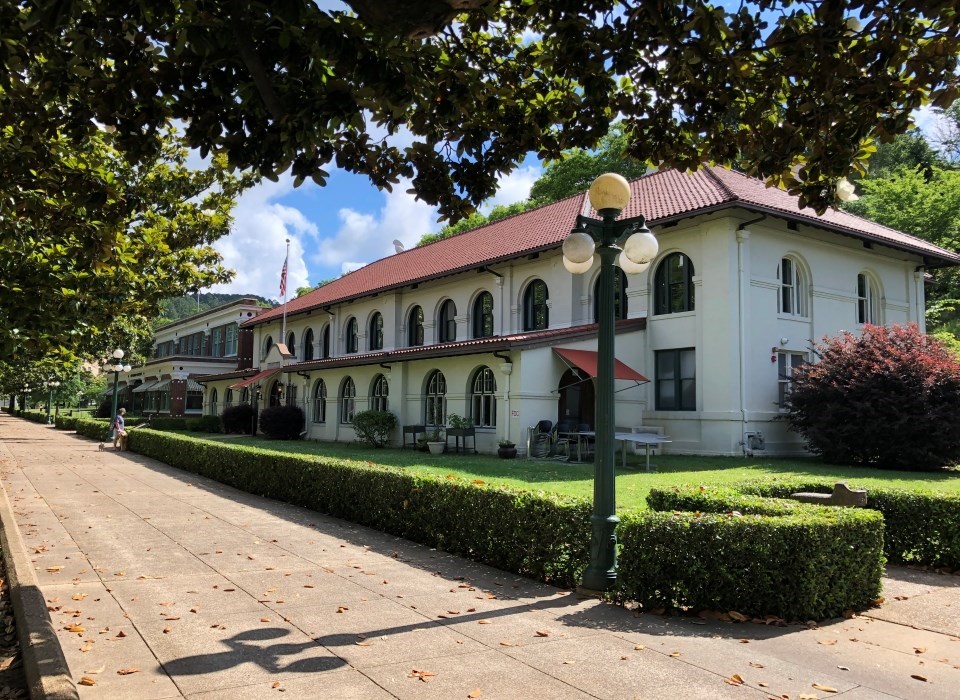News Release

NPS
News Release Date: November 9, 2020
Contact: NewsMedia@nps.gov
WASHINGTON – According to the Rutgers University’s Center for Urban Policy Research, the Federal Historic Preservation Tax Incentives Program contributed more than $12.1 billion in output in terms of goods and services to the U.S. economy and added $6.2 billion in gross domestic product (GDP) in Fiscal Year 2019. The program is administered by the National Park Service and the Internal Revenue Service, in partnership with State Historic Preservation Offices.
"For more than 42 years, the Federal Historic Preservation Tax Incentives program has enabled the preservation and rehabilitation of more than 45,000 historic properties, while generating more than $188.2 billion in GDP nationally,” said Margaret Everson, Counselor to the Secretary, exercising the delegated authority of the National Park Service Director. “This is an incredible example of a federal/state partnership that continues to drive investments in historic preservation and revitalize communities across the country."
The Federal Historic Preservation Tax Incentives Program, commonly known as the Historic Tax Credit, provides a 20 percent federal tax credit to property owners who undertake a substantial rehabilitation of a historic building in a commercial or other income producing use, while maintaining its historic character.
The National Park Service certifies that a building is historic, and therefore eligible for the program, and that the rehabilitation preserves the building’s historic character; the Internal Revenue Service is responsible for administering the other aspects of the tax credit under the Internal Revenue Code. The tax incentives program has helped to revive abandoned or underutilized schools, warehouses, factories, churches, retail stores, apartments, hotels, houses, agricultural buildings, offices, and other buildings across the country, and in turn, has helped support the redevelopment of entire downtowns and neighborhoods. It also supports community revitalization, job creation, affordable housing, small businesses, farms, and Main Street development, among other economic benefits.
According to this year’s report, almost half of the certified rehabilitation projects were located in low- and moderate-income areas and three-quarters of all projects were in economically distressed areas. Almost half of all projects were less than $1 million in rehabilitation costs and 17 percent were less than $250,000. A quarter of all certified rehabilitation projects were located in communities with a population of less than 50,000 people and 16 percent in communities with a population of less than 25,000 people.
For Fiscal Year 2019, program-related investments created approximately 109,000 jobs, including 39,000 in construction and 25,000 in manufacturing, generating $1.7 billion and $1.1 billion in income respectively. As a result of both direct and multiplier effects, and due to the interconnectedness of the national economy, sectors not immediately associated with historic rehabilitation, such as agriculture, mining, transportation, and public utilities, benefited as well.
State Historic Preservation Offices are the first point of contact for information and guidance for property owners interested in the program, and the National Park Service works closely with them in the administration of the program. A breakdown by state of the economic impacts and other program information is included in the reports.
Fiscal Year 2019 Highlights and Reports
Case Studies
-
St. Rose de Lima Church Complex (New Orleans, Louisiana): The rehabilitation of this historic complex, including a church and two schools, provides new homes for a theater company, social justice organizations, dozens of micro-entrepreneurs, and a charter school. The tenants in the rehabilitated buildings and the services they provide created new jobs and draw visitors who have helped to revitalize the surrounding area.
-
Cambridge Apartments (Seattle, Washington): The historic rehabilitation of the Cambridge Apartments illustrates how historic preservation can meet the demand for affordable housing. The rehabilitated Cambridge Apartments provides affordable housing that is convenient to the city’s financial, government, hospital, and education job centers and serves households earning below 50% to 60% of area median income.
-
Robinson Theater (Clarksburg, West Virginia): The Robinson Grand Performing Arts Center attracts over 120,000 visitors to 250 events a year in Clarksburg, West Virginia. The impact of the rehabilitation of the historic theater has been a catalyst for new economic development in the area, and increased local tax revenues can be attributed to increased foot traffic in and around the theater.
-
Hale Bathhouse (Hot Springs, Arkansas): The Hale Bathhouse is the oldest bathhouse on Bathhouse Row in Hot Springs National Park. Its rehabilitation into Hotel Hale was made possible with a long-term lease from the National Park Service.
Fiscal Year 2019 Highlights
Rehabilitated Housing Units
Rehabilitated new or existing housing units: 16,280
Low- and moderate-income housing units: 6,206
Economic Benefit
Total estimated rehabilitation investment (Qualified Rehabilitation Expenditures): $5.77 billion
Historic rehabilitation projects certified: 1,013
Estimated total jobs created: 109,000
Output (Goods and Services): $12.1 billion
Gross domestic product: $6.2 billion
Income created: $4.6 billion
